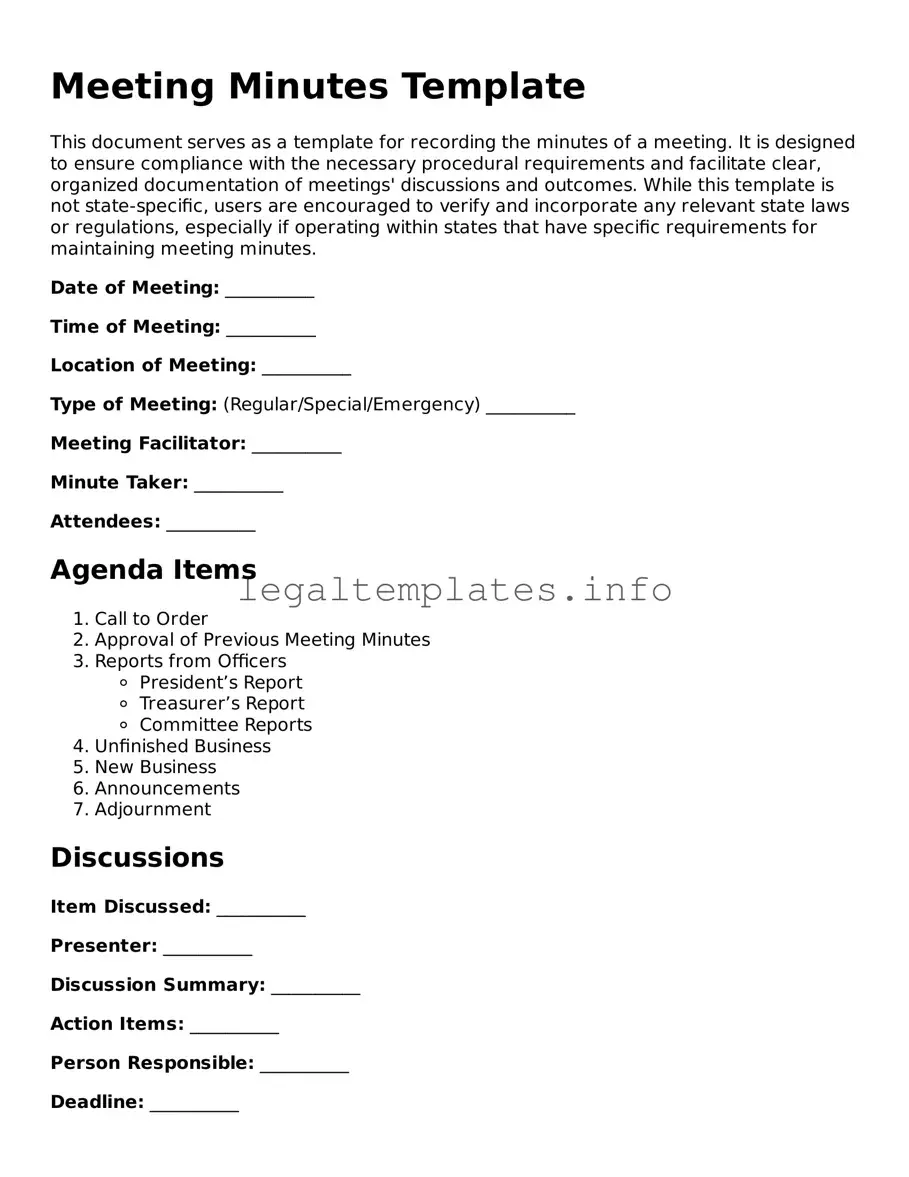Meeting minutes play a crucial role in the documentation of decisions and discussions that occur during meetings. Despite their importance, there are several misconceptions about the Meeting Minutes form that can lead to inefficiency and confusion. Understanding these misconceptions is key to ensuring that meeting minutes serve their intended purpose effectively.
Misconception 1: Meeting minutes must record every detail of the discussion.
This is a common misconception that can lead to unnecessarily lengthy documents. Meeting minutes should be concise, capturing key points, decisions made, action items, and responsibilities. The aim is to provide a clear and accurate record of the outcomes, rather than a transcript of everything that was said.
Misconception 2: Only formal meetings require meeting minutes.
While it's true that formal meetings, such as board meetings and committee meetings, often require detailed minutes, other types of meetings can also benefit from this practice. Even informal or ad-hoc meetings can produce decisions or action items that should be documented to ensure accountability and follow-through.
Misconception 3: The person taking meeting minutes must be an attendee.
In many cases, a participant in the meeting will take on the role of minute-taker. However, it's not a strict requirement. An external party or someone dedicated to the role can also perform this duty, provided they have a clear understanding of the meeting's objectives and access to the necessary information.
Misconception 4: Meeting minutes do not have a standard format.
While there's flexibility depending on the organization's needs and the type of meeting, meeting minutes typically follow a basic structure. This includes information such as the date and time of the meeting, attendees, agenda items, decisions made, actions taken, and assignments. Adhering to a consistent format helps ensure that the minutes are organized and easy to follow.
Misconception 5: Meeting minutes are only for internal use.
While meeting minutes often contain internal information, they can also serve as an official record for external stakeholders, such as investors, regulators, or members of the public, depending on the context. In some cases, meeting minutes may need to be disclosed as part of legal or regulatory requirements, showcasing their broader significance beyond just internal record-keeping.
